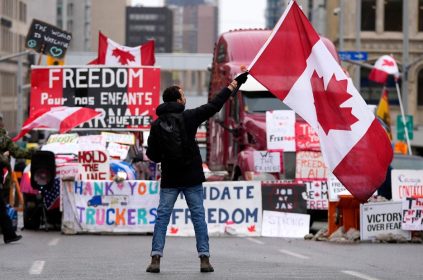When Toronto reported in June that it had fully complied with physical distancing requirements in its shelter system, there were still 32 beds at seven sites that weren’t yet adhering to distancing standards, new documents in an ongoing lawsuit reveal — something a coalition of homeless service providers and human rights advocates allege that senior city managers knew.
“Although it was under no requirement to do so by a particular point in time, for its own reasons, the City determined to assert that it had achieved compliance with Physical Distancing Standards on June 15, 2020, despite actual knowledge that it had not in fact done so,” it claims.
Lawyer Jessica Orkin, who represents the coalition, said the new documents – which include emails between city staff and others on June 15 – present a “very clear paper trail” of the city knowing it wasn’t in compliance, but deciding to claim it anyway.
The coalition is asking the court to find that the city hadn’t reached compliance by June 15 — and still hasn’t.
The city disputes that claim, though it confirmed in documents filed Tuesday that 32 beds at seven sites were not properly distanced when it claimed full system compliance on June 15.
The city argues that the beds represent just 0.45 per cent of the shelter system, and that their impact was negligible. The last of those beds were taken out of the system by Sept. 9, the city says.
The lawsuit also includes disputes over the definition of appropriate spacing and who the city is obligated to shelter.
A hearing has been scheduled for Thursday.
The suit was initially filed by the coalition earlier in the pandemic. It accused the city of failing to provide safe living conditions in its shelters, respites and drop-in facilities.
A settlement was reached in May, in which the city agreed to make best efforts to ensure two metres between all beds, stop using bunk beds, and ensure that beds were available for anyone receiving support services from the system since March 11, including those in encampments.
But the coalition relaunched its case in July – shortly after the city said it reached full compliance.
In the newly filed documents, the city says the decision to assert achievement on June15 was made by Gordon Tanner, the city’s homeless initiatives and prevention services director, and was based on its interpretation of the settlement and the commitment to use “best efforts” to achieve distancing — understanding that “fine tuning and adjustments would continue.”
Reaching that milestone meant the city no longer had to issue weekly progress reports, and could stop issuing monthly updates after two months.
The coalition has filed with the court emails from the day the final weekly report was sent that is says are evidence senior managers knew the city hadn’t reached full compliance. The city says the emails merely demonstrate a final push to get there.
“I know everyone wants this to disappear, but I feel like we are pushing a bit too hard to finalize today and it could leave us vulnerable,” Brad Boucher, operations and support services manager, wrote to several other city staff members at 7:37 a.m. on June 15, the documents show.
Boucher wrote that his team hadn’t begun “any of the work” outlined in an earlier email from the director of service planning and integrity, “so we will definitely be rushed to complete.”
An email from a little more than an hour later from Tanner says that he’d assured Mary-Anne Bedard, general manager of SSHA, that the report that day would be their last weekly dispatch.
“Please do what you can to have the team complete their assigned work today. Our (quality assurance) visits will continue as we move forward in the spirit of continuous improvement,” Tanner wrote back to Boucher and several others on the email chain.
Other emails in the new filings raised concern with specific sites, and show Boucher noting that a number of providers either used a six-foot measurement instead of the mandated two metres – a difference of roughly half a foot – “or admitted they never measured at all.”
After a conference call between Tanner and other city staff members around 5:30 p.m. that day, the final weekly report was sent to the coalition’s legal team by the city’s counsel at 9:49 p.m.
Never miss the latest news from the Star with our email newsletters. They’re free with your subscription.
The city, in its new filing, said it was “evident” that the significance of the commitment made in the May settlement was not communicated to staff. But the city argues that the documents filed don’t support the allegation that staff were deliberately hiding sites that weren’t yet compliant.
The coalition, meanwhile, is asking the court for “additional protections” to ensure the sufficiency of the city’s efforts, and the reliability of the information it provides.
Since COVID-19 struck, the costs to operate a shelter bed have doubled in Toronto due largely to reductions in capacity, and the city says roughly a third of shelters are no longer viable.
Victoria Gibson, Local Journalism Initiative Reporter, Toronto Star













